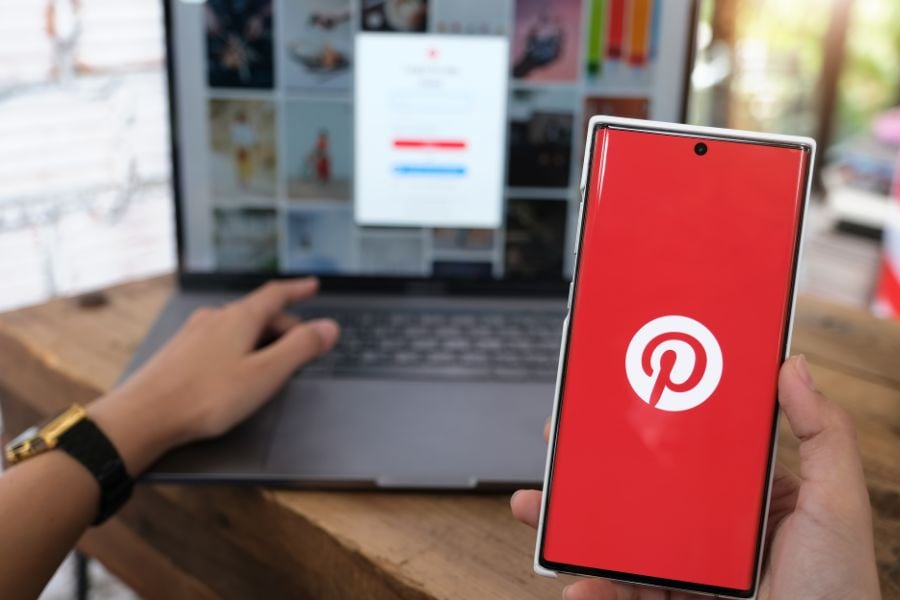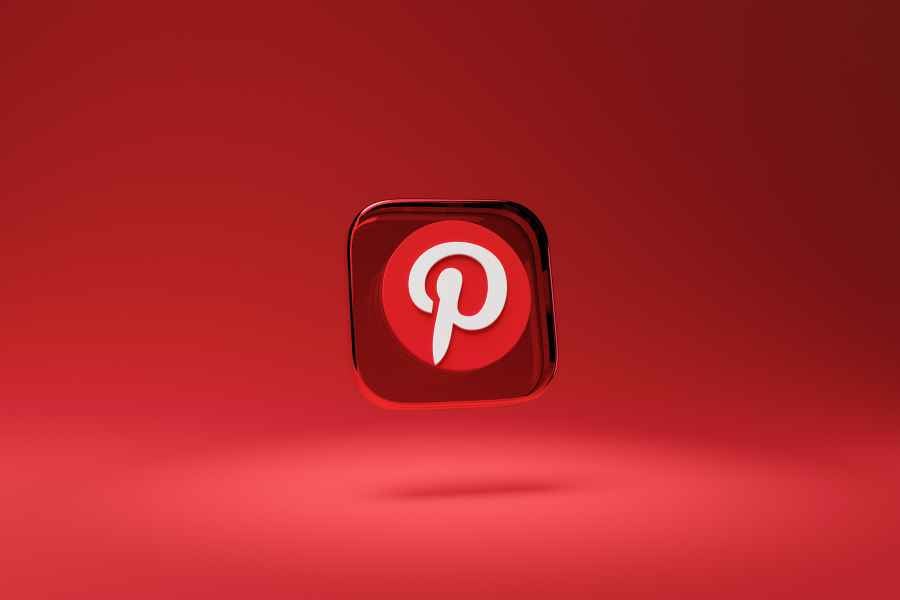Ready to turn your pins into profit with Pinterest marketing this year?
Pinterest is not just about pinning your favorite recipes or dream destinations; it’s a powerhouse for your brand’s visibility and a secret weapon for driving traffic to your site.
But how exactly do you navigate this visual wonderland to benefit your business?
From cracking the code of the perfect promoted pin to harnessing the power of boards and Pinterest trends, we’re about to spill all the beans.
Ready to become a Pinterest marketing maestro?
Let’s dive in!

What is Pinterest Marketing? (& Why It Matters)
Now, what is Pinterest marketing?
Well, it’s more than just sticking fancy images on a digital Pinterest board.
Pinterest marketing is like having your very own digital gallery, where you strategically showcase your products or services to attract, educate, and convert a global audience.
But does Pinterest marketing really work?
Absolutely! Here’s why…
Boosts Brand Awareness
Pinterest is your virtual canvas, your online showroom where you can amplify your brand awareness.
Think of it like your brand’s personal storytelling space, a visual narrative that captures who you are and what you stand for.
For example, a sustainable clothing brand might create boards featuring their eco-friendly products, tips for sustainable living, and inspiring quotes about conservation.
This way, your target audience immediately gets a clear, engaging snapshot of their ethos.
Drives Traffic to Your Website
Pins on Pinterest are directly linked to their source. That means every pin from your site is a pathway back to your site.
For instance, a mouthwatering image of a chocolate cake can lead a Pinterest user straight to your bakery’s online store or blog post with the recipe.
It’s like having an army of digital sign-spinners, guiding folks right to your online shop front.
Establishes and Expands Your Community
Pinterest is more than a social media platform; it’s a vibrant, interactive community.
It’s the neighborhood block party where you mingle, share ideas, and get to know one another.
As you interact with others through comments or collaborations, your brand becomes part of a broader conversation, extending your brand reach and social influence.
Every repin is like a personal endorsement, taking your brand to the far corners of the Pinterest universe.
Educates Customers and Drives Online Sales
A pin isn’t just a pretty picture; it’s a knowledge nugget, a bite-sized piece of information that educates and informs.
Instead, pins provide valuable information to each Pinterest user, subtly influencing their buying decisions, and effectively driving online sales.
By pinning useful, intriguing content, you gently guide potential customers along the buying journey.
For instance, a home décor brand can use Pinterest to post DIY decorating tips, how-tos, and product highlights.
A well-played Pinterest game could catapult your brand visibility, drive traffic to your site, build a community of engaged Pinterest followers, and boost online sales.
Essential Pinterest Components

Let’s take a closer look at Pinterest’s components to understand how this vibrant virtual city functions…
The Pin
Consider pins the lifeblood of Pinterest; they’re the billboards that line the city streets.
In other words, they can be an image pin or video pin chosen to be saved to Pinterest.
Each pin is like a conversation starter, sparking interest, sharing information, or telling a story.
For example, a fashion retailer might product pin an image of their latest summer collection, with each pin linking back to their online store.
The more engaging and eye-catching your pins, the better your chances of stopping traffic and drawing people in.
The Board
If pins are the lifeblood, then boards are the arteries of Pinterest, guiding that lifeblood in the right direction.
A board is where you collect and organize your pins, creating a cohesive, themed narrative.
Think of boards as your brand’s digital neighborhoods, each with its own unique vibe and appeal.
You could have a ‘Summer Fashion Trends’ board, a ‘DIY Fashion Hacks’ board, and a ‘Sustainable Fabrics’ board, each teeming with relevant, engaging pins.
The Feed
Imagine the feed as the bustling main street of Pinterest city, where everything’s happening.
This is where you’ll find all the pins from the people and boards you follow. It’s a never-ending stream of inspiration, perfectly tailored to your interests.
Let’s say you’re interested in sustainable fashion; your feed might be a mix of pins from your favorite eco-friendly brands, DIY upcycling ideas, and tips for shopping sustainably.
It’s your personalized window into the Pinterest world, always updating, always inspiring.
7 Simple Steps to Creating Your Winning Pinterest Marketing Strategy

Pinterest strategy is about understanding the lay of the land and crafting your unique message.
Let’s break it down into manageable steps…
1. Set Up Your Pinterest for Business Profile
Setting up a Pinterest Business account is free, and it opens up a wealth of features like Pinterest Analytics and Pinterest Ads.
When setting up your Pinterest profile, don’t just fill in the blanks; create a rich, engaging description using relevant keywords to help people find you.
Think of it like your brand’s elevator pitch, drawing people in and giving them a snapshot of what you’re about.
2. Research Pinterest Trends & Keywords
Pinterest is all about what’s trending.
So keep your finger on the pulse of trending topics related to your brand, and create pins that connect these trends to your brand narrative.
Additionally, keyword research is like your compass, showing you what people are searching for.
Use this information to craft your pins and boards to meet these needs head-on.
3. Research Your Competitors

Start by identifying your direct competitors. Who else is vying for the attention of your target audience?
Visit their boards and take a look at what they’re pinning. Are they sticking to a particular theme? What kind of content seems to be resonating with their audience?
Take a look at how they engage with their Pinterest followers. Are they responding to comments? Do they run contests or ask for audience input?
Pay attention to their branding too. How do they use their logo, tagline, or brand colors? It can be a lesson in what to do — or, in some cases, what not to do.
And check their posting schedule. Are they pinning daily or weekly? Do they pin more on specific days or times?
By knowing when your competitors are most active, you can find opportunities to capture your audience’s attention when they’re less active.
In the grand scheme of things, competitor research is about learning from their successes and failures so you can identify gaps you can fill, serving your audience in ways they aren’t.
4. Create Unique and Educational Content
Here’s a pro tip — Pinterest users are knowledge-hungry explorers.
Feed their curiosity with educational content that provides real value.
Mix up your pin types, from an enlightening product pin toa step-by-step video tutorial, to keep things fresh and engaging.
But how do you create these pins?
Using tools like Canva make it easy to create stunning, pinnable graphics, even if you’re not a design whiz.
Remember, Pinterest is a visual platform; it’s not just about what you say, but how you present it. Aim for a cohesive aesthetic that tells your brand story in a compelling way.
5. Use Scheduling Tools for Pinning Efficiency

In the world of Pinterest marketing, consistency is key.
Consistency builds trust, and trust is the foundation of any good relationship, including the one with your Pinterest audience.
But maintaining a steady stream of pins can feel like trying to keep a dozen plates spinning all at once. That’s where scheduling tools come in.
You simply create your pins, decide when you want them to go live, and let the tool take care of the rest.
These tools also come with analytics features. You can track your pin performance, understand what’s working (and what’s not), and tweak your strategy accordingly.
6. Direct Traffic to Your Own Website
One of the main goals of Pinterest marketing is to drive traffic back to your website.
Every pin should link back to relevant content on your site, whether it’s a blog post, a product page, or a landing page.
But remember, it’s not about hard-selling; it’s about providing value and then gently guiding your audience to learn more.
7. Tracking Success and Refining Your Strategy
It’s not enough just to set up a Pinterest business account, create beautiful pins, and call it a day.
You also need to regularly track your performance through Pinterest Analytics. See what’s working (and what’s not), and then adjust your social media marketing strategy accordingly.
How do you do this?
Pinterest Analytics tells you which of your pins are the most popular, which ones drive the most traffic to your website, and even when your audience is most active on Pinterest.
You can also track your Pinterest performance through Google Analytics, which lets you see how much traffic is coming to your website from Pinterest, which pages these visitors are landing on, and how they behave once they’re on your site.
Platforms like Tailwind, Buffer, or Hootsuite can also help schedule pins, analyze performance, and manage your Pinterest account alongside other social media accounts.
Tracking your success and refining your strategy is about continuous learning, adaptation, and growth. That’s the key to turning pins into profit.
Bonus Pinterest Marketing Tips

Now, you’ve set up a great Pinterest marketing strategy, but who doesn’t love some pro tips to level up even more?
Here are some savvy techniques that’ll get your pins noticed, engagement spiked, and ultimately lead your audience right back to your website.
- Create Multiple Variations of the Same Pin: It’s okay to have multiple pins for the same piece of content! This way, you get to present the same information in a variety of ways, catching the interest of different users.
- Utilize Each Pinterest Board: Organize your pins into specific, keyword-rich Pinterest boards. This not only makes it easy for your audience to find what they’re looking for, but it also helps with searchability on Pinterest.
- Get More Engagement: Engaging with your audience is crucial. Don’t just post pins; repin, comment on others’ pins, and respond to comments on your pins. Also, high-quality images, compelling descriptions, and strategic timing of pins can dramatically boost engagement.
- Promote Your Product on Pinterest: Lifestyle shots and how-to guides are great ways to promote your products without being overly salesy. Also, consider running paid Pinterest Ads for an extra boost.
Remember, the key to successful Pinterest marketing lies in being creative, consistent, and engaged.
When you focus on those elements, you’ll not only promote your product effectively but also build a community around your brand.
Conquering Pinterest Marketing

You’ve come a long way from a mere Pinterest spectator! You’re now ready to take the platform by storm.
It might feel like a puzzle when you first begin, but remember, every master was once a beginner.
Implement these strategies, refine, repeat, and soon, you’ll watch your business grow right before your eyes.
So go on, turn those pins into profit and make this your year of Pinterest marketing domination!



